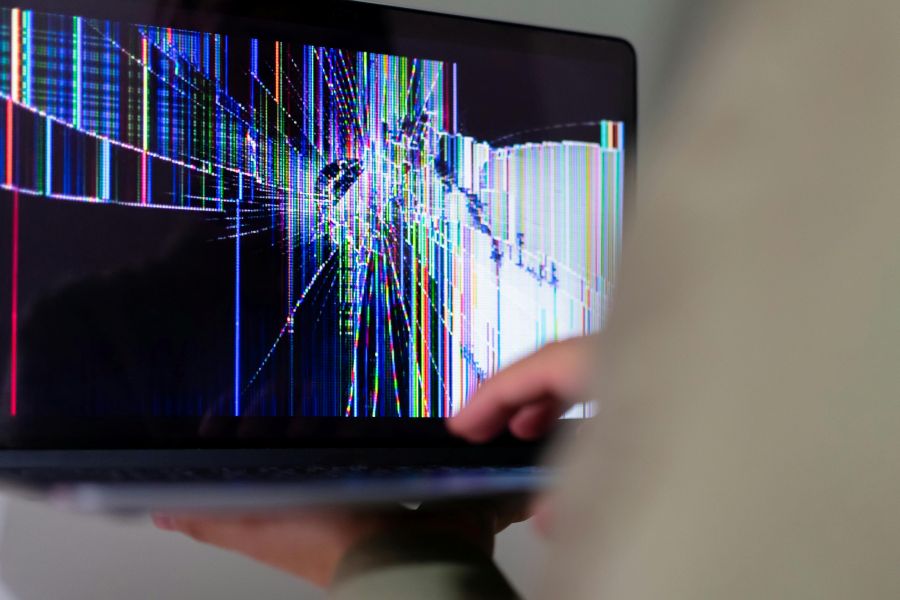Introduction
When you see text that appears distorted, glitchy, or altered with unique marks above the characters, you may wonder what these symbols are called. These symbols often add a surreal or chaotic visual effect to normal text. Whether you’re creating glitch art or simply adding an aesthetic touch to your social media posts, understanding these symbols can be beneficial. In this post, we’ll break down the different types of symbols commonly seen above letters and discuss their role in typography and design, including how they can be used in glitch text.
What Are Diacritical Marks?
The symbols you see above letters are known as diacritical marks. These marks can be placed above or below a letter to change the pronunciation, meaning, or aesthetic appearance of the letter. While they are often seen in languages other than English, they also play a key role in artistic and digital projects, including glitch text generation.
Diacritical marks are used across various languages for a wide range of purposes. For example, the acute accent on the letter “é” indicates a different pronunciation than a regular “e”. In other cases, diacritical marks can completely change the meaning of a word. These marks also play an important role in creating visually dynamic and complex text effects, making them an integral part of glitch and distorted typography.
Common Diacritical Marks Above Letters
- Acute Accent
One of the most common diacritical marks, the acute accent is used in languages such as French, Spanish, and Italian. It’s placed above a letter to indicate a particular emphasis or pronunciation, as in é (French “café”). In glitch text, the acute accent can provide a sharp, tilted effect. - Grave Accent
Similar to the acute accent, the grave accent is used in languages like Italian and French to change the pronunciation of vowels. It’s often seen in words like è (French for “the”). The grave accent gives a distinct downward slant to the letter, making it ideal for glitch text that requires a sense of heaviness or distortion. - Circumflex
The circumflex is a symbol placed over certain vowels in languages like French and Portuguese. It can be used to indicate a change in vowel length, stress, or meaning. For example, the circumflex can be found in ê (French for “ête”), giving the letter an angular, almost “pointed” feel. In glitchy, stylized text, the circumflex serves to add angularity and an extra layer of distortion. - Tilde
Often associated with languages like Spanish and Portuguese, the tilde can indicate nasalization or stress. The tilde can appear above letters such as ñ or ã, creating a distinct shape that adds emphasis to the text. In glitch text, the tilde can convey a sense of fluidity or wavy distortion. - Umlaut
Commonly found in German, the umlaut modifies the sound of vowels, turning them into sounds like ä, ö, or ü. The umlaut is often placed above a vowel, and in glitch text, it enhances the chaotic visual style. It can break up the regular flow of text, adding a futuristic or even retro feeling.
Why Do These Symbols Appear Above Letters in Glitch Text?
In glitch text, diacritical marks such as these symbols are often exaggerated or distorted to create a sense of confusion, randomness, or “glitchy” effects. When combined with random fonts, backgrounds, and text distortions, these symbols help generate a visual disorder that aligns with the aesthetic of glitch art.
The glitch aesthetic is popular in design, typography, and digital art because it evokes the feeling of malfunction, disarray, and cyberpunk chaos. By using symbols above letters, designers and glitch artists can emphasize a sense of technological breakdown, which is what makes glitch text so appealing in certain artistic and creative contexts.
How to Incorporate Diacritical Marks in Your Glitch Text
To add symbols above your letters and create glitchy text, you can use various methods, including:
- Online Text Generators
Glitch text generators are a quick and easy way to create distorted text. By typing your desired text into an online tool, you can instantly apply various diacritical marks, like acute accents or tilde symbols, to create a glitchy effect. - CSS and HTML
If you’re working on a web design project, CSS allows you to manipulate text styles and even create animated glitch effects. You can use thetext-transformandtext-shadowproperties in combination with HTML elements to add diacritical marks or apply a glitch effect. - Custom Fonts
Another approach is to find or create custom glitchy fonts that include diacritical marks. These fonts will give your text a more personalized glitchy feel and provide a high level of flexibility. - Graphic Design Software
For more control over your text effects, you can use graphic design tools like Adobe Illustrator or Photoshop. These programs allow you to manually place diacritical marks above your letters and adjust their positioning to create unique glitch text.
Conclusion
The symbols above letters—diacritical marks—are essential components in glitch text design. They provide the necessary visual complexity and chaos to create distorted, glitchy text effects. Whether you are working on a glitch art project, enhancing your social media posts, or experimenting with typography, understanding how to use these symbols can take your design to the next level. By incorporating these marks into your glitch text, you can add depth, texture, and a sense of unpredictability that is at the heart of glitch aesthetics.

